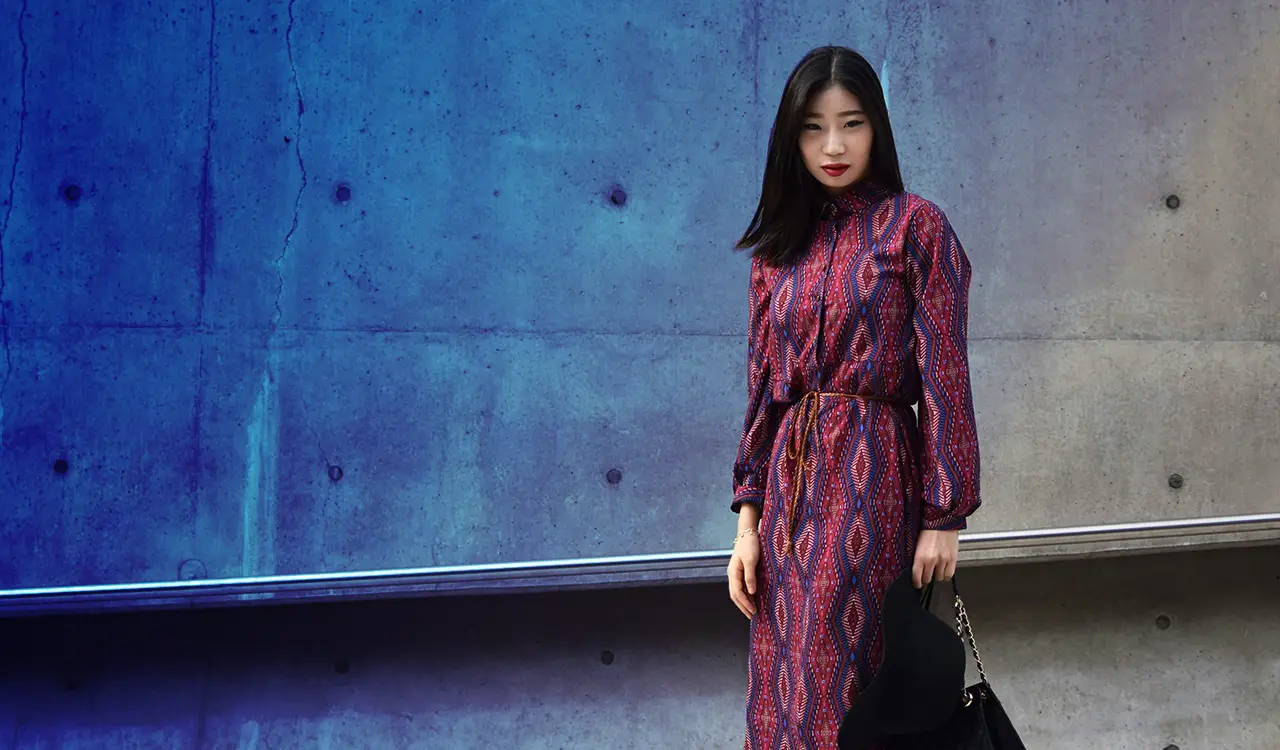In 2023, demand seemed to be driving a revival of good fortune for the Asian global luxury industry. Prada reported a 21 percent rise in retail revenue and 62 percent in net profit in the first half of 2023, with its fastest growth coming from Asia, which made up 36 percent of global sales. Similarly, LVMH saw its global sales rise 17 percent in the first half of last year, buoyed by 31 percent revenue growth in Japan and 23 percent across the rest of Asia.
The Asian market has become polarized with transactional market segments, such as cosmetics, which have been commoditized, and driven by convenience. These customers look for the best platform to deliver both price and authenticity. On the other end of the spectrum, there are deeply dedicated and knowledgeable luxury customers who seek tailormade experiences.
China Luxury Erosion
But Asia’s rebound quickly evaporated in the second half of 2023, and projected organic sales growth is looking even weaker this year, according to luxury industry executives. Post-Covid exuberance has given way to caution amongst Asian consumers, even those in the High Net Worth Individual (HNWI) bracket. This is particularly so in China, Asia’s luxury lynchpin, where sluggish economic recovery, a muddled fiscal policy environment and—above all—a troubled real estate sector have eroded luxury shoppers’ confidence.
“The market has seen softening since May 2023,” says Nicolas Morineaux, the Shanghai-based CEO of Galeries Lafayette China, which offers over 400 French luxury and high fashion brands to the Chinese market. While a post-Covid start to the year brought keen HNWIs back to the shops after years of being cooped up, that pent-up energy was largely spent by the year’s end. “China rules your numbers,” says one Hong Kong-based luxury retail executive, “and when China is down, your global numbers are down.”
Provenance Shopping Shift
Morineaux points to two additional trends that are dragging down China’s luxury recovery. The first is the slow pace at which China has reintegrated itself into the global travel and tourism industry. China’s HNWI and other luxury consumers have for many years gone “provenance shopping,” traveling to Europe’s fashion capitals to enjoy the most authentic experience and avoid higher prices and luxury taxes at home. While regional price differences for many luxury items have largely been homogenized by brand owners, outbound Chinese tourism remains an important sales channel and an important way Chinese luxury consumers stay abreast of trends and collections. “But flight volumes to Europe are still only 55 percent of what they were in 2019 and will likely not return until the end of 2024.”
The Savvier Luxury Shopper
The lack of flight capacity is compounded by a change in the way Chinese luxury customers shop. “A decade ago, Chinese shoppers used to come to Paris with a stack of cash, see the Eiffel Tower in the morning and then head off to Chanel and Cartier,” says the London-based CxO of a luxury clothing brand. Now, however, experienced luxury shoppers are more sophisticated and self-educated, and carefully consider each luxury acquisition and how it fits into their personal collection.
Armed with more knowledge, Chinese and other Asian luxury customers are now self-catering through digital channels. This, Morineaux notes, has given rise to 2024’s second big trend. “New trading platforms have drastically reorganized around luxury and premium brands,” which have attracted knowledgeable—and more price-conscious–Asian luxury shoppers. He points to “parallel” grey market sites like DeWu—also known as Poizon—a Shanghai-based platform for branded fashion traders, which started as a sneaker and sportswear sales hub in 2015, and now is a major channel for luxury cosmetics and accessories. DeWu reportedly chalked more than $5 billion in gross retail volume in 2023.
Luxury Houses Contend with House-Poor Chinese HNWIs
Low Chinese consumer confidence is the dominant underpinning issue, says Paul Cavey, a Taipei-based economist who heads up the research house East Asia Econ. “Terrible consumer confidence is the worst it has been since surveys started in the 1990s. Policymakers have shown no enthusiasm for addressing this, so there is a risk that this is going to become a structural issue in China’s economy.”
While the sentiments of the ultra-wealthy are not usually captured in traditional consumer confidence surveys, Cavey believes that there are a couple of reasons why Chinese HNWIs actually share in the gloom of their mass-market peers. The weak real estate market, and expectations of its continued weakness, are the primary drivers. “China’s wealthy consumers owe much of their wealth to the great returns the property market has provided over the last two decades.” The second is what he refers to as “Covid scarring” of household income—the hangover effect of China’s overlong pandemic lockdown which has dampened consumers’ willingness to spend their disposable income.
China Isn’t the Only Game in the Region
A weak China market can be balanced out by other vibrant markets around the region, and 2023 saw some significant—and surprising—growth stories. Thailand is one that has stepped up. Many luxury retailers have seen a doubling of sales in the market last year. “Thailand is an amazing market now, with a solid base of wealthy domestic consumers,” says the London-based CxO. Another luxury executive familiar with the market points out that even during the pandemic Thailand’s super-rich, who could not travel to Europe, began to purchase durable luxuries—such as watches and jewelry—and as a result, domestic luxury shoppers are now the majority of a Thai luxury market that was once inbound tourist-driven. Korea, Japan, and Australia also have remained buoyant through 2023.
Supersize Flagships
More concerning to Asia’s high-end retailers, however, is the fact that the industry’s response to softer sales has been to double down on the expansion of flagship stores and showrooms. “Luxury retailers started their redevelopment plans in tier-one Asian cities as soon as their doors opened after Covid,” says the Hong Kong-based luxury executive. She explains that high-end mall owners and other property firms, encouraged by the velocity of Asia’s post-Covid sales, quickly joined in: “Any space once allocated for ‘kidszones’ or F&B was removed for luxury expansion.” She believes Asia will see a boom of huge, 3,000-4,000 square foot flagship stores “that have expanded horizontally and vertically” in 2025 and 2026.
There is a worry that this supersized retail trend, what the exec refers to as “cathedral thinking,” is borne of an over-optimistic assessment of Asia’s size and scale and an over-reliance on historical growth patterns. “Duplex and triplex flagship stores are not going to be sustainable for retailers, particularly as rents rise over the next few years,” she says.
On the other hand, observes the London-based CxO, doubling down on flagships in Asia could be seen as a relatively safe bet from a global expansion perspective: “Asian investment is still financially attractive compared to Europe or North America. Capex and labor are still relatively cheaper, and tenancy agreements with landlords shorter and more flexible.”
There is also a firm belief in the luxury space that ecommerce sites still do not offer the full package for many Asian HNWIs. “You may discover collections online, but most Asian luxury clients still want to go buy in an interesting store,” says the CxO. “Luxury customers want a totality of experience—they want to come into a flagship store and be completely taken care of,” the Hong Kong-based luxury executive concedes. She acknowledges that digital tools are playing a major role in further enhancing that experience. “Sales associates now bring a tablet into the sales ceremony, loaded up with a desired item’s history, and a ‘look book’ of images so customers can see the piece interacting with other wardrobe choices.”
Surprise and Delight
Luxury retailers must abandon their overly simplistic calculus—organic growth driven by Asia’s favorable demographics that actively engage their Asian clientele as they are. Morineaux believes that building the capacity to offer choice and variety is key to winning over and retaining the loyalty of sophisticated Asian luxury customers, particularly in China. “We must always surprise our customers, with new brands, new pop-ups, new opportunities to learn. Collaborations are also very hot right now.”
Morineaux feels this new-found love of value will not go away and that there will still be the motivation for price consciousness. The Asian market has become polarized, he says, “There are very transactional market segments, such as cosmetics, which have been commoditized, and driven by convenience. These customers look for the best platform to deliver both price and authenticity.” On the other end of the spectrum there are deeply dedicated and knowledgeable luxury and premium customers who seek tailormade, “Showroom 2.0” experiences, as Morineaux calls them.
Luxury, Customer by Customer
The main message, therefore, is that luxury brand leaders must start appreciating that Asia’s luxury markets are diverse, complex, and require careful strategic attention. Retailers must also embrace regional diversity, particularly if they are to weather the stormy pockets that emerge in one market or another. “If you combine Thailand, Australia, Korea and Japan, this portfolio can be a great counterweight to China when it lags,” observes the CxO. The keys to thriving in Asia’s luxury market in 2024, he concludes, are to “calm down, keep steadily educating customers across all markets in the region–and continuously introduce new brands.”





